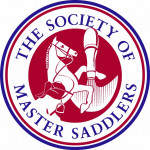Posted: 25th March 2022 | Back to news feed

In this article Society of Master Saddlers’ Master Saddler, Master Bridle Maker, Master Harness Maker, Registered Master Saddle Fitter and Registered Qualified Bridle Fitter, Helen Reader, provides advice on:
Q, What are the main points I need to look for in a well-fitting saddle/how do I spot signs of a problem?
A, Although the saddle must be assessed ridden, it first needs to be looked at statically. It is really important when doing this to ensure that the horse is stood square on a level firm surface, so that they are as level and straight as possible. The saddle must be placed on the horse’s back so that it sits behind and not on top of the horse’s shoulders. The first thing you can look for is the balance of the saddle, is the seat of the saddle parallel with the ground? If the seat is being tipped forwards or backwards, it will tilt the rider’s pelvis and cause them to become unbalanced when the horse starts to move. The length of the saddle is determined by the length of the horse’s rib cage. From the horse’s flank run your fingers forward with a small amount of pressure until you feel the back of the rib cage, then follow the natural curve of the ribs up towards the saddle. This point is a good guide to where the saddle tree must finish, but the panel of the saddle may go a little past because once the horse starts to work and lifts through it’s frame this area opens out.
As stated above it is essential that the horse is seen ridden, the horse must move freely under the saddle and not with a different action to when the horse isn’t wearing a saddle. If the horse has a lovely long flowing stride when loose in the field or on the lunge but never under saddle, then question why. Perhaps the saddle is tight somewhere and blocking the horse’s shoulder or causing tension through the back? Any behavioural issues that the horse shows under saddle, for example bucking, refusing to move forwards, snatching the reins etc. could be signs that the saddle needs to be assessed by an SMS RQ/MSF. However, they could also be signs of discomfort somewhere else, so it is advisable to have the horse checked by a vet or musculoskeletal practitioner to rule out any physical issues. If the rider is suffering from aches/pains or unable to maintain their position in the saddle, perhaps they are finding their legs keep sliding backwards and their body is tipping forwards, then the saddle may be out of balance. The saddle may move or slip to one side, forwards or even backwards; these can be caused by a number of issues such as asymmetry of the horse’s shoulders or back, lameness, flocking that has settled unevenly within the saddle panel or the rider may not sit straight or balanced. Some of these issues can be rectified by a flocking adjustment or change of gullet plate to rebalance the panel, whereas in other cases it may require a different saddle to solve the issue.
For more information visit www.mastersaddlers.co.uk or contact The Society of Master Saddlers on 01449 711642.
The Equestrian Index newsfeed is compiled from articles submitted by advertising members and expresses the opinions of those members. Watsons Directories Ltd shall not be held liable for any inaccuracies or mis-statements therein.